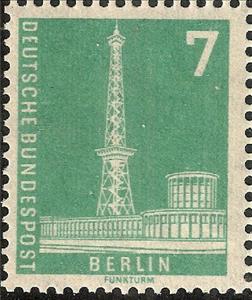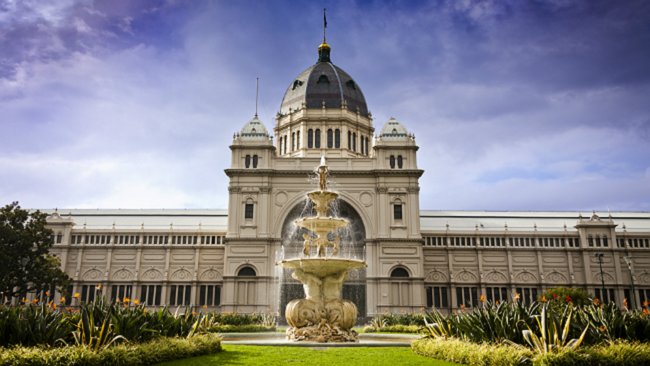Stamp: Radio tower and exhibition halls (Berlin 1956)
Radio tower and exhibition halls (Berlin 1956)
03 January (Berlin ) within release Berlin cityscapes goes into circulation Stamp Radio tower and exhibition halls face value 7 German pfennig
| Stamp Radio tower and exhibition halls in catalogues | |
|---|---|
| Michel: | Mi: DE-BE 135ww |
Stamp is square format.
Also in the issue Berlin cityscapes:
- Stamp - Radio tower and exhibition halls face value 7;
- Stamp - Radio tower and exhibition halls face value 7;
- Stamp - Radio tower and exhibition halls face value 7;
Stamp Radio tower and exhibition halls it reflects the thematic directions:
A building or edifice is a structure with a roof and walls standing more or less permanently in one place, such as a house or factory. Buildings come in a variety of sizes, shapes and functions, and have been adapted throughout history for a wide number of factors, from building materials available, to weather conditions, to land prices, ground conditions, specific uses and aesthetic reasons. Buildings serve several needs of society – primarily as shelter from weather, security, living space, privacy, to store belongings, and to comfortably live and work. A building as a shelter represents a physical division of the human habitat (a place of comfort and safety) and the outside (a place that at times may be harsh and harmful).
The Royal Exhibition Building is a World Heritage-listed building in Melbourne, Victoria, Australia, built in 1879–1880 as part of the international exhibition movement, which presented over 50 exhibitions between 1851 and 1915 around the globe. The building sits on approximately 26 hectares (64 acres), is 150 metres (490 ft) long and is surrounded by four city streets. It is at 9 Nicholson Street in the Carlton Gardens, flanked by Victoria, Carlton and Rathdowne Streets, at the north-eastern edge of the central business district. It was built to host the Melbourne International Exhibition in 1880–81, and then hosted the even larger Centennial International Exhibition in 1888, and the formal opening of the first Parliament of Australia in 1901. The building is representative of the money and pride Victoria had in the 1870s. Throughout the 20th century smaller sections and wings of the building were subject to demolition and fire; however, the main building, known as the Great Hall, survived.
A tower is a tall structure, taller than it is wide, often by a significant factor. Towers are distinguished from masts by their lack of guy-wires and are therefore, along with tall buildings, self-supporting structures.



